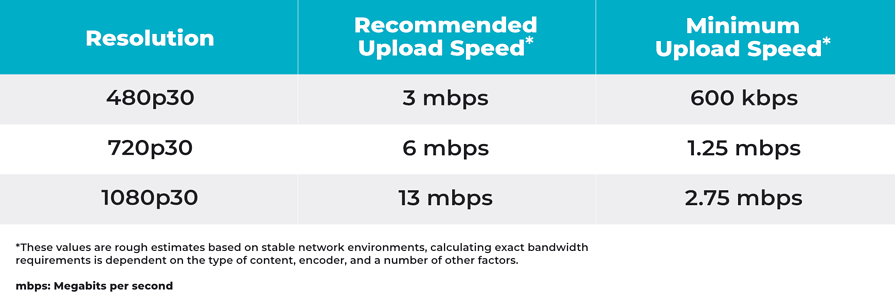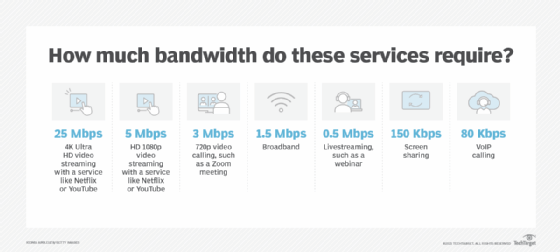The Future of Internet Speeds: Patterns in Megabits Per Second
The Future of Internet Speeds: Patterns in Megabits Per Second
Blog Article
How Megabits Per Second Influence Your Online Activities
The concept of megabits per second (Mbps) plays a pivotal duty fit our on-line experiences. As digital tasks proliferate, understanding the ramifications of Mbps on pc gaming, video, and streaming conferencing comes to be increasingly crucial. Higher Mbps can improve efficiency and lower disturbances, while insufficient rates may foster aggravation and inefficiency. Examining your house's specific requirements in connection with these rates is important, especially as numerous gadgets contend for data transfer. Yet, the subtleties of how Mbps influences numerous online tasks require more exploration, specifically as our dependence on digital connection proceeds to progress.
Comprehending Megabits Per Second
When considering web speed, it's essential to recognize the concept of megabits per second (Mbps), which works as a basic measurement for data transfer rates. This statistics evaluates just how much data can be transferred over a web connection in one second, supplying a clear understanding of performance abilities - Megabits Per Second. For context, one megabit is equal to one million little bits, and Mbps is typically made use of to reveal data transfer for different on-line tasks
A higher Mbps shows a much faster internet link, allowing users to do jobs such as downloading documents, searching web sites, and involving in online pc gaming extra efficiently. Normal surfing calls for around 1-5 Mbps, while streaming high-definition video may demand 5-25 Mbps. Understanding these requirements is vital for establishing the ideal net speed needed for specific tasks.
Furthermore, the number of devices connected to a network can impact total efficiency. Multiple users streaming, gaming, or downloading simultaneously can stress readily available bandwidth, leading to slower rates - Megabits Per Second. Assessing personal online practices and requirements is vital in selecting a web strategy that straightens with one's requirements, making sure a seamless electronic experience
Streaming and Buffering Issues
Streaming high-def content has actually ended up being a staple of modern-day online home entertainment, yet it is usually gone along with by frustrating buffering problems. These interruptions can considerably diminish the checking out experience, resulting in frustration and possible loss of target market involvement. Buffering takes place when the information transferred from the streaming solution is not gotten swiftly enough to maintain a smooth playback, frequently due to insufficient net speed measured in megabits per second (Mbps)

Moreover, real-time streaming can be influenced by network congestion, which happens when numerous devices share the very same data transfer. Enhancing connection rate and guaranteeing appropriate Mbps is crucial for a smooth streaming experience. As streaming services remain to develop, understanding the influence of Mbps on buffering problems stays important for consumers looking for nonstop home entertainment.
Online Gaming Performance
The effect of net speed on online tasks prolongs beyond streaming, dramatically influencing online pc gaming efficiency. In competitive pc gaming, reduced latency and high transmission capacity are essential for a seamless experience. A quick link lessens lag, enabling players to react promptly to in-game occasions, which can be the difference between victory and loss.
Bandwidth, determined in megabits per second (Mbps), plays a vital duty in supporting several devices and video gaming platforms simultaneously. Insufficient bandwidth can cause dropped connections or lowered game quality, negatively influencing gameplay. On-line multiplayer video games require significant information transfer, especially during peak video gaming hours when numerous gamers are online.
Busy first-person shooters require greater speeds to preserve responsiveness, while turn-based technique games may work moderately well on reduced speeds. As on-line pc gaming continues to evolve, with increasing visual integrity and more complex multiplayer environments, the demand for greater Mbps will only increase.
Video Clip Conferencing Top Quality
In today's electronic landscape, video conferencing top quality is heavily affected by web speed, specifically in terms of data transfer and latency. Top quality video calls require sufficient data transfer to transfer audio and video data seamlessly. Commonly, a minimum of 1.5 Mbps upload and download rates is recommended for standard meaning video, while high-def video conferencing generally requires at the very least 3 Mbps.
Latency, or the hold-up in between sending and obtaining information, likewise plays a critical role in the customer experience. Greater latency can lead to resemble, lag, and disjointed communications, which can hinder partnership and engagement throughout conferences.
Additionally, multiple participants in a video meeting can stress readily available transmission capacity, necessitating also greater rates. Network blockage, typically triggered by synchronised tasks like streaming or downloading, can further deteriorate video clip high quality. Therefore, for organizations relying upon video clip conferencing for remote collaboration, comprehending the connection between megabits per total and second interaction quality is essential for preserving efficiency and enhancing virtual communications.
Choosing the Right Net Plan
Choosing a proper net plan is essential for guaranteeing ideal performance in different on the internet tasks, specifically in setups that internet demand high transmission capacity, such as video clip conferencing and online pc gaming. Megabits Per Second. When taking into consideration an internet strategy, it is important to assess both the speed and data allocation to match your details usage needs
For households with numerous individuals engaging in simultaneous tasks, a plan supplying higher megabits per second (Mbps) is suggested. Generally, a minimum of 25 Mbps appropriates for standard streaming and browsing, Check This Out while strategies going beyond 100 Mbps are better for more intensive tasks. Furthermore, consider the nature of your online activities; video clip conferencing calls for at the very least 1.5 Mbps submit speed, while on-line video gaming may require a reduced latency however consistent connection.
Unlimited data strategies can avoid throttling and disturbances, particularly if hefty use is anticipated. By attentively selecting an internet plan tailored to your demands, you can enhance your on-line experience, making sure smooth, continuous accessibility to your favored tasks.
Conclusion
In verdict, the value of megabits per second (Mbps) in forming online tasks can not be overemphasized. A thorough understanding of individual or household Mbps demands is necessary for selecting an appropriate web plan that adequately sustains diverse online tasks and individual needs.

Commonly, a minimum of get redirected here 25 Mbps is appropriate for typical streaming and surfing, while plans exceeding 100 Mbps are preferable for even more intensive tasks. Furthermore, think about the nature of your online tasks; video clip conferencing needs at least 1.5 Mbps submit rate, while on-line video gaming might require a lower latency but regular connection.
Report this page